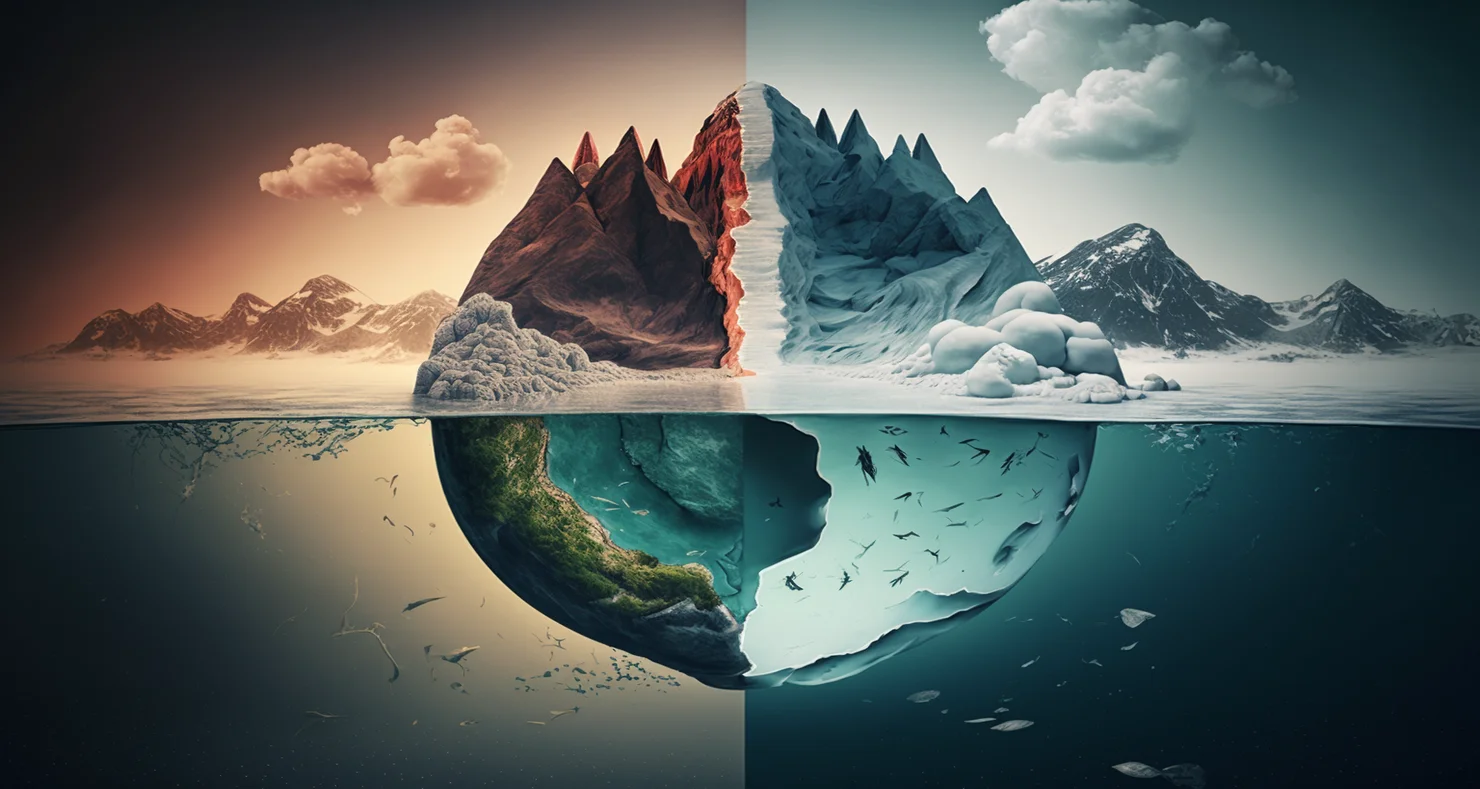How to reverse climate change cheaply and quickly. “Just pour iron dust into the oceans,” says one entrepreneur. Scientists warn against this practice
American businessman and entrepreneur Russ George has been attracting attention for more than fifteen years with his controversial plan to stop climate change. He wants to “fertilize” the oceans with iron dust, which is supposed to promote the growth of phytoplankton. This, in turn, will lead to lower levels of carbon dioxide in the earth’s atmosphere.
George used to be a member of Greenpeace, even serving on the crew of the Rainbow Warrior, but now considers Greenpeace one of his main opponents. In 2005, he founded Planktos, which aims to “restore ecosystems and slow climate change.”

It all started with a fiasco.
In May 2007, the company announced its plans to dump 100 tons of iron over an area of 10,000 km² in the open sea near the Galapagos Islands. This was to be the first of six large-scale operations that Planktos planned to conduct between 2007 and 2009 in the Atlantic and Pacific Oceans. However, the plan was opposed by several nonprofit organizations, questioning the scientific basis of the project.
The start of the operation was delayed for nearly three months because of supply problems, but the Weatherbird II eventually sailed from Fort Lauderdale on November 5, 2007. Unbeknownst to the organizations trying to stop the operation, plans changed, and instead of heading for the Galapagos Islands, the ship headed for Bermuda, where it stopped for refueling, intending to cross the Atlantic and conduct the operation near the Canary Islands.
To their surprise, on November 14, 2007, the ship arrived in the port of St. Georges for refueling. Surprisingly, it turned out that there was no iron dust on board at the time. Planktos attempted to extract the iron needed for the experiment from shredded scrap metal, which contradicted previous statements and raised concerns about whether the iron used would be contaminated by oils or impurities.
Two days later, the ship departed for the Canary Islands. In December 2007, local authorities refused to allow it to enter the port, and the ship headed north to Madeira. On February 13, 2008, the company announced that its funds had dried up and that all operations would be postponed indefinitely. It later sold its vessel to an oil exploration company.

Fertilizing the ocean with iron
Writing in Nature in 2008, journalist Rachel Courtland called the end of these activities “welcome news for many in the scientific community.” She stressed that critics say more research is needed to understand the environmental impacts of large-scale iron dumping, which may include hypoxia and the production of other greenhouse gases.
Although the company said its work would help clarify these issues, some scientists were concerned that it was moving too quickly and lacked the expertise to evaluate its work. “They were not in a position to produce credible scientific findings or conduct experiments.” said Ken Johnson of the Monterey Bay Aquarium Research Institute in Moss Landing, California, for example.
In 2012, the Haida Salmon Restoration Corporation decided to conduct an “ocean greening experiment.” It spread more than 100 tons of the iron-rich substance over a large area in the Pacific Ocean. It chose Russell George as the lead scientist for this operation, who claimed after the operation was completed that it led to increased phytoplankton growth over an area of 10,000 square miles.
However, the scientists were concerned. This is because previous similar experiments had shown that fertilizing the ocean with iron in this way would particularly encourage the growth of a genus of microalgae known as Pseudo-nitzschia, which in turn produces large amounts of domoic acid, a potentially lethal neurotoxin that accumulates in the food chain.

A mad scientist or a mad entrepreneur?
Russ George hasn’t given up on the idea of fertilizing the oceans with iron, even after all these years. In June 2022, he defended them on the Freethink YouTube channel. In the beginning of his monologue, he says he is considered a heretic because he wants to restore the oceans, the planet’s climate and save the world, not make a bunch of money. He explains that the idea of fertilizing the oceans is not his, but is based on the findings of scientist John Martin.
He reiterated that if we pour iron ore dust into the oceans, it will cause phytoplankton to grow, which will then absorb carbon dioxide from the atmosphere. “And it won’t take decades, it will only take a few years.” George argues convincingly, adding that instead of costing trillions of dollars, it will only cost millions.
The restored phytoplankton, he says, has the capacity to absorb 30 to 35 billion tons of CO2 a year, while humanity emits 45 billion tons of the gas into the atmosphere each year. He bases his belief on the natural phenomenon of wind carrying 700 million tonnes of dust a year from the African Sahara, which then provides the minerals and nutrients that allow the Amazon rainforest to grow as far away as South America.
On the one side is Russ George, who believes that the idea of fertilising the oceans with iron is damned because, among other things, it is too cheap. On the other is a section of the scientific community, raising a warning finger, saying that such experiments without a proven scientific basis can be very dangerous.













